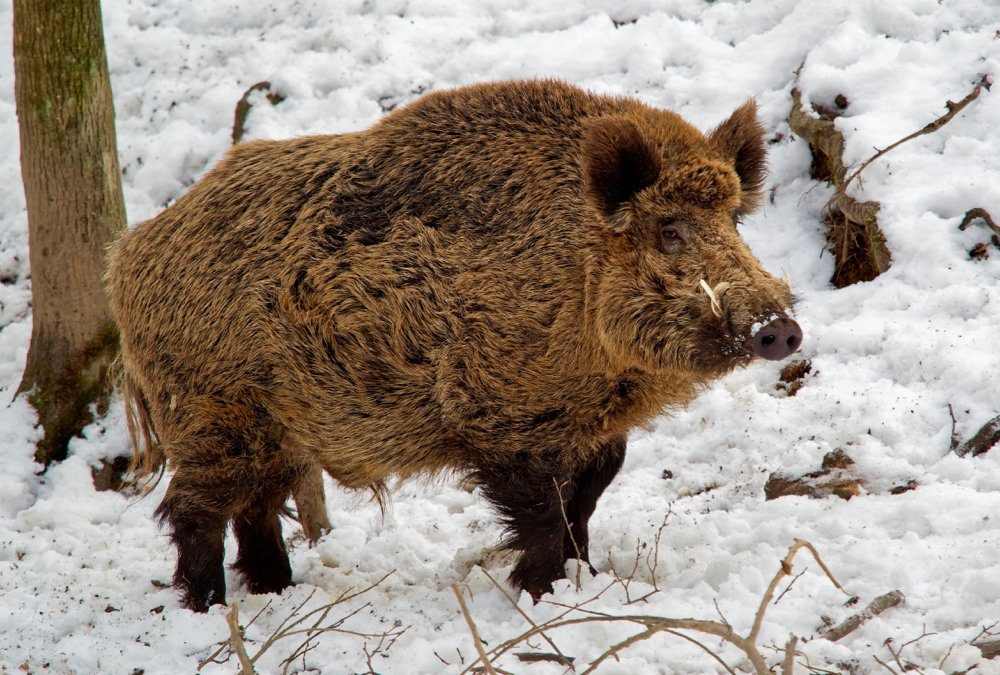Wild boar ban included in draft invasive species changes

The possession and trade of the Eurasian Wild Boar will be phased out over two years, pending the approval of changes to Ontario’s Invasive Species Act, which are up for public comment until June 7.
A draft plan and proposed new rules for pigs under the Invasive Species Act were uploaded recently to the Environmental Registry of Ontario. The two main actions proposed in the draft document include a phased-in ban on Eurasian Wild Boar, and bringing pigs on the loose, regardless of breed, under the provisions of the province’s Invasive Species Act.
That means the owner of an escaped pig will have the responsibility to notify the Ministry of Natural Resources and Forestry (MNRF) and ensure the escaped animal is either recaptured or killed.
Why it matters: Although Ontario is not currently threatened by the damaging effects of wild pigs compared to other jurisdictions, the MNRF wants to keep it that way.
Ministry representative Bree Walpole told Farmtario that input received from the public until June 7 will be considered in revising the documents, “along with research and management experiences from other jurisdictions.”
All types of pigs can interbreed, whether they are domesticated breeds, heritage breeds, pot-bellied pets or Eurasian Wild Boar. In North American jurisdictions where feral populations have become numerous, wild pigs have been blamed for widespread crop damage. They’ve also been notoriously difficult to control. Creating an open season for hunters has, in multiple cases, backfired and led to populations migrating into adjacent areas and increasing their reproductive rate as a response to the human-induced stress.
The biggest threat posed by Eurasian wild boar is disease, particularly African swine fever (ASF). The draft executive summary states “Wild pigs are a host to over 30 significant viral and bacterial pathogens and diseases (e.g., influenza, brucellosis, classical swine fever, foot and mouth disease, pseudorabies, and trichinosis, among many others).” ASF, considered the largest disease threat to the global pork industry, hasn’t been detected in North America yet, but the U.S. and Canada recently agreed to a coordinated plan should the disease be detected in a wild pig population on the continent.
Walpole says the proposed new rules would address the issue of pig escapes by putting domesticated livestock, pot-bellied pigs and Eurasian Wild Boar into the same category under the Invasive Species Act.
If no owner can be identified, MNRF is prepared to trap and kill the animal. Agricultural landowners who find feral pigs of any breed on their farm will be asked to report them, but will also have the right to remove them if necessary to protect their crops.
The draft strategy acknowledges the increased possibility of escapes from pasture-based hog farms relative to indoor housing but stops short of calling for enforcement of adequate fencing. Instead, it encourages the Ministry of Agriculture, Food and Rural Affairs (OMAFRA) to “continue work(ing) with partners, including Ontario Pork, to share resources (about outdoor pig-rearing) and promote responsible farming practices.”
Likewise, it acknowledges the growth in popularity of pot-bellies as pets and the increased incidence of owners becoming overwhelmed by their responsibilities and turning them loose. Again though, it stops short of calling for active enforcement of containment standards and instead opts for continued public awareness. However, the release of any breed of pig into the natural environment would be prohibited.
Inspections to determine compliance with the rules could occur, possibly resulting in enforcement in the form of an Invasive Species Act fine or charge.
With Eurasian Wild Boar, however, additional rules are proposed to support a two-year phase-out. And according to Walpole, the decision to focus on the breed and its hybrids stems from an analysis of wild pig sightings obtained through a public participation initiative over the past two years as well as research from the United States.
In collaboration with the iNaturalist wildlife preservation group and the Ontario Federation of Anglers and Hunters, MNRF has been collecting emailed wild pig sighting reports – preferably with photos – at [email protected]. Last year, the ministry published a report detailing the first two years of sightings.
Close to a third of animals that could be identified were pot-bellied pigs. Walpole noted, however, that several of those had been returned to their homes by the time MNRF investigated.
And, importantly, the confirmed sightings of pot-bellied pigs were almost always single animals – meaning reproduction in the wild was unlikely.
Among the confirmed sightings of Eurasian Wild Boar, several were near properties that were known to house captive wild boar – so they were almost certainly escapees or offspring of escapees.
“In Saskatchewan’s rural municipalities, proximity to Eurasian Wild Boar farms is one of the strongest predictors of local wild pig distribution,” Walpole explained. “Preliminary research demonstrates a similar trend in Ontario.”
The draft strategy would, after the two-year phase-in, “ultimately ban the import, possession, transport, propagation, buying, selling, leasing or trading of live Eurasian Wild Boar and their hybrids. During the proposed two-year phase-out period, owners…would be required to provide notification to the MNRF including the owner’s name, contact information, location and number of Eurasian Wild Boar and hybrids.”
Source: Farmtario.com

